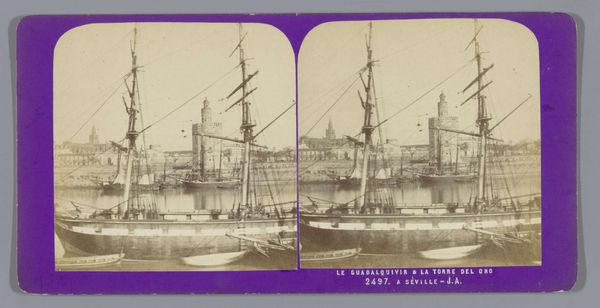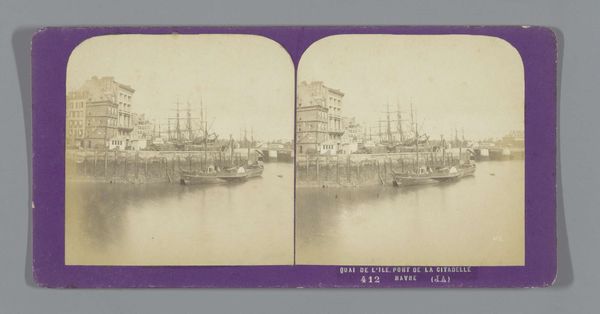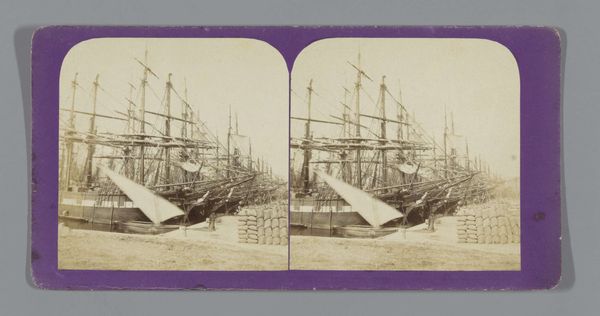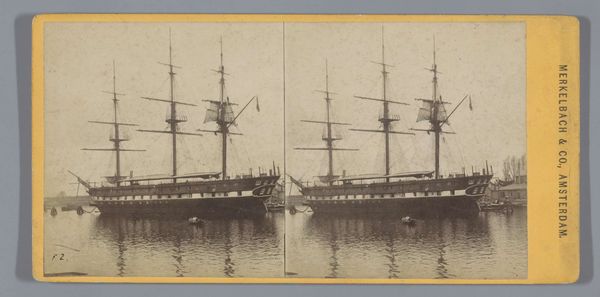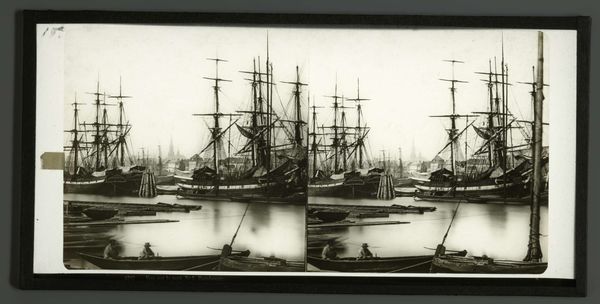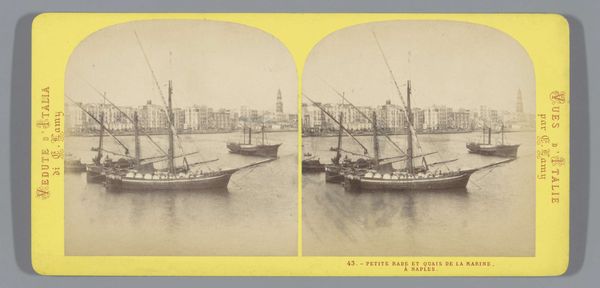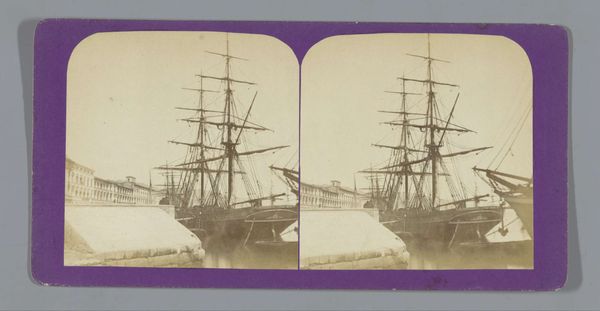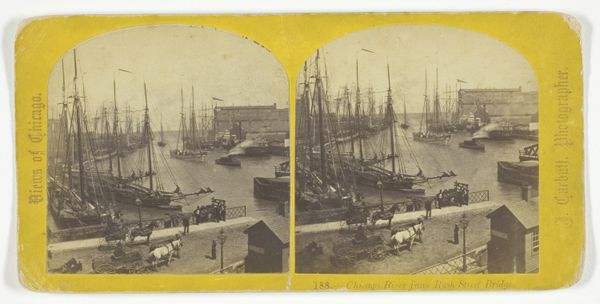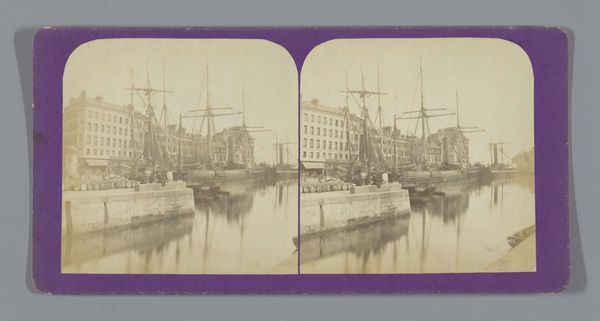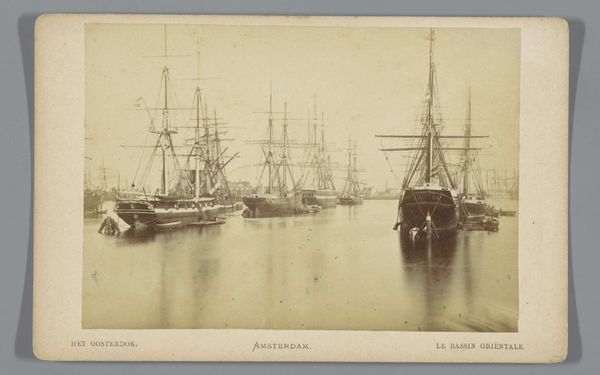
print, photography, gelatin-silver-print
# print
#
landscape
#
photography
#
gelatin-silver-print
#
cityscape
Dimensions: height 85 mm, width 170 mm
Copyright: Rijks Museum: Open Domain
Editor: Here we have "Schepen in de haven van Málaga" by Jean Andrieu, made sometime between 1862 and 1876. It’s a gelatin-silver print photograph, and I find the composition to be incredibly dense. It's a cityscape but it's completely dominated by these massive ships and their rigging. What do you make of it? Curator: The beauty lies precisely in that density. Note how Andrieu has used the geometric lines of the masts and rigging to create a complex web that draws the eye upwards. It is a fascinating juxtaposition of organic and inorganic forms, a kind of organised chaos. Editor: Organised chaos - I like that description! But it’s also…flat. The foreground, middle ground, and background almost merge. Is that intentional, perhaps reflecting an interest in Japonisme? Curator: Precisely! The flattening of perspective, so characteristic of ukiyo-e prints, is evident here. Consider how the tonal range is deliberately narrow. Andrieu forgoes deep shadows and highlights in favour of a more uniform, ethereal light, contributing to this flattening effect. Editor: So it's not a flaw, but a choice, leaning into a particular style. Did the stereoscopic format also influence the final visual impression? Curator: A key question to explore, yes. This format enhances the sense of depth, inviting close inspection. However, it equally draws attention to the flatness of composition that we just examined. Editor: That’s fascinating; the stereoscopic view emphasizing flatness instead of depth. I had never thought of that. Thank you. Curator: Indeed. By embracing flatness within a form that otherwise implies three-dimensionality, Andrieu subtly disrupts conventional modes of perception. The photograph, in its way, becomes an exercise in deconstructing the illusion of reality.
Comments
No comments
Be the first to comment and join the conversation on the ultimate creative platform.
